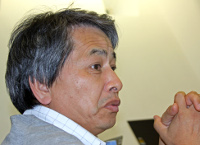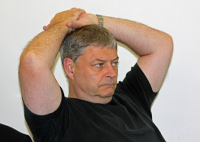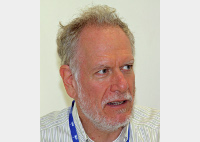Director’s Corner
2 September 2010
ILC R&D plan updated
Our R&D plan has once again been updated to reflect a number of significant developments in our present four-year GDE programme. The document is entitled "ILC Research and Development Plan for the Technical Design Phase – Release 5" and we consider this plan to be a ‘living’ document, in the sense that we update it roughly every six months to maintain the most current description of our programme, goals and resources. Our main goal remains unchanged. It is to produce a Technical Design Report (TDR) and Project Implementation Plan (PIP) for the ILC at the end of 2012 that can be used to propose the project to governments.
Our goals for 2012 are to complete a set of crucial R&D goals that demonstrate the technical viability of the ILC design. R&D will continue after the TDR is complete, especially for Superconducting Radio Frequency (SCRF) systems tests, industrialisation and other areas where technical developments are on a longer time scale. Our Global Design Effort TDR effort is been coordinated by our three project managers, Marc Ross (Fermilab), Nick Walker (DESY) and Akira Yamamoto (KEK). In addition, we are embarking on an effort on the same time scale to produce a Project Implementation Plan, which is being coordinated by Mike Harrison and with the very important governance part being developed under the leadership of Brian Foster. The PIP that will address governance, collaboration, finances, industrialisation and other practical consideration necessary to form a collaboration between governments for the ILC. I will discuss the PIP in next week’s column. For the technical part, especially with the limited resources we have available, we have defined a prioritised R&D programme, and a design effort focused on cost, performance and risk optimisation. This programme is main subject matter of the newly released R&D Plan.
SCRF is the primary technology upon which the ILC design is based. The new R&D plan describes the critical R&D goals, resources and schedule for being coordinated by Akira Yamamoto. As stated in the report, “Underpinning the overall strategy of the R&D plan for the SCRF is the desire to produce the best possible cost-optimised solution for the Main Linac, consistent with the technology state-of-the-art.” Excellent progress has been made in achieving the first-phase gradient goals of 35 Megavolts per metre with 50% yield and now the emphasis is moving “towards development of industrial mass-production models in support of the updated VALUE estimate, for which several parameters still require either specification or review.” Release 5 of the R&D plan allows for cost containment studies, development of an industrialisation plan and adopting to different site characteristics and requirements.
One important chapter in the new plan deals with our R&D programmes involving accelerator systems beam tests. Of particular importance in the shorter term is the reconfigured test facility (CesrTA at Cornell University) on electron cloud effects. The CESR ring has been rebuilt with twelve superconducting wigglers in zero-dispersion regions and low-emittance parameters approaching that of the ILC damping ring. The electron cloud programme is outlined in the new R&D plan, with the timescale to provide the information near the end of this year necessary to formulate a recommended scheme for mitigation of electron cloud effects to the ILC-GDE, a major milestone. The report also outlines the final focus optics and stabilisation R&D programme on the KEK Accelerator Test Facility 2 (ATF-2) and how that work will help with the TDR.
The conventional facility requirements and ‘value engineering’ plans are described, the plan to understand surface building, carry out three-dimension computer-aided design work in the crowded tunnels and the approach we are taking to parallel development of more than one site, especially with limited resources. The report emphasises the philosophy towards cost, schedule and risk, while a more detailed plan will follow in future updates. The focus of cost savings must be in superconducting radio frequency and civil facilities and siting areas where most of the cost is contained. The need to do risk studies is noted, but a plan does not yet exist.
Even with our very limited resources, the updated plan is consistent with defining priorities and key goals so that the original goals for 2012 TDR can be achieved. We continue to believe our plan is realistic, and recent progress has given us confidence that we can achieve the goals we have outlined. We still have many uncertainties in support and we are pressing hard to maintain the support we need to achieve our goals to produce a high quality TDR in 2012. We have also begun to discuss the post-2012 era and those plans are beginning to evolve and I will address them in future columns.
– Barry Barish























